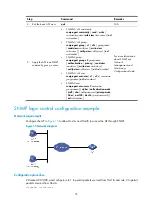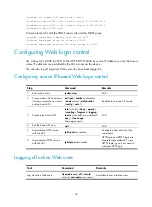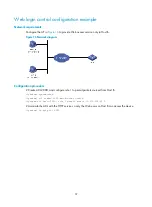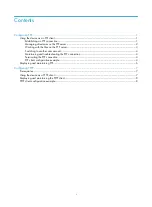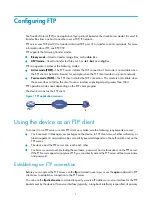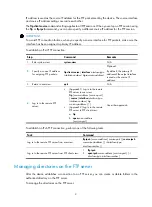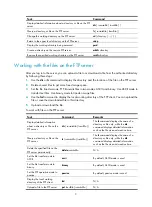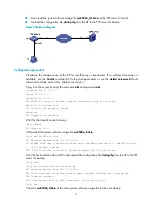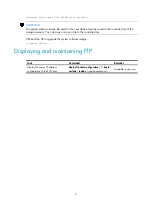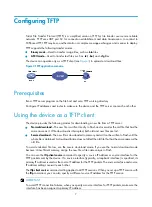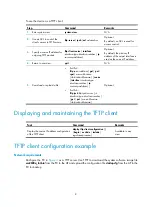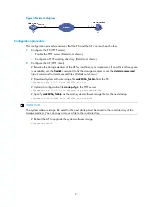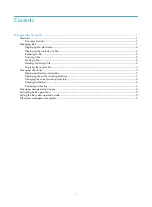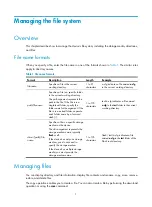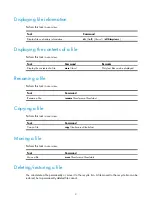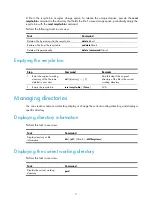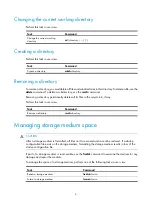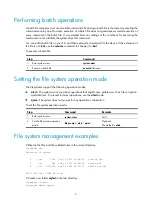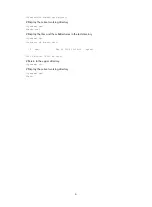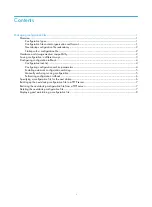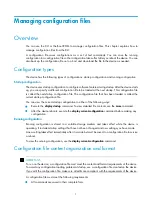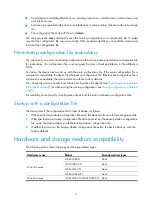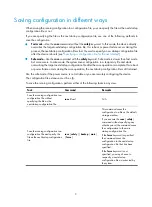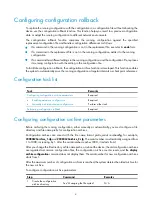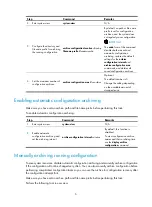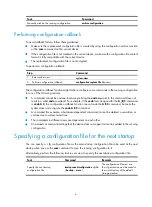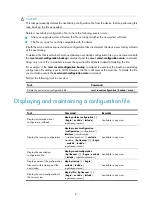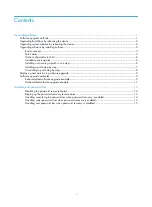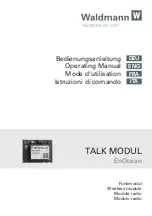
1
Managing the file system
Overview
This chapter describes how to manage the device's file system, including the storage media, directories,
and files.
File name formats
When you specify a file, enter the file name in one of the formats shown in
. The similar rules
apply to directory names.
Table 1
File name formats
Format Description Length
Example
file-name
Specifies a file in the current
working directory.
1 to 91
characters
a.cfg indicates a file named
a.cfg
in the current working directory.
path
/
file-name
Specifies a file in a specific folder
in the current working directory.
The
path
argument represents the
path to the file. If the file is in a
single-level folder, specify the
folder name for the argument. If the
file is in a nested folder, separate
each folder name by a forward
slash (/).
1 to 135
characters
test/a.cfg indicates a file named
a.cfg
in the
test
folder in the current
working directory.
drive
:/[
path
]/
file-
name
Specifies a file in a specific storage
medium on the device.
The
drive
argument represents the
storage medium name, typically
flash
or
cf
.
If the device has only one storage
medium, you do not need to
specify the storage medium.
If the device has multiple storage
media, you must provide the
storage medium name.
1 to 135
characters
flash:/test/a.cfg indicates a file
named
a.cfg
in the
test
folder of the
Flash root directory.
Managing files
You can display directory and file information, display file contents, and rename, copy, move, remove,
restore, and delete files.
The copy operation enables you to create a file. You can also create a file by performing the download
operation or using the
save
command.

